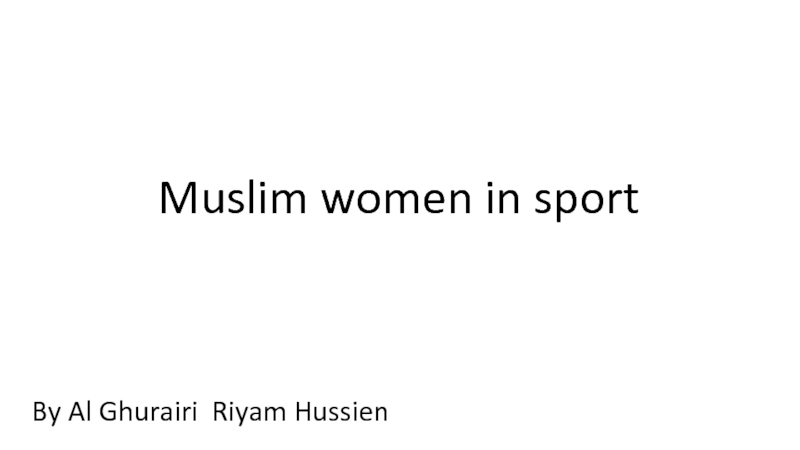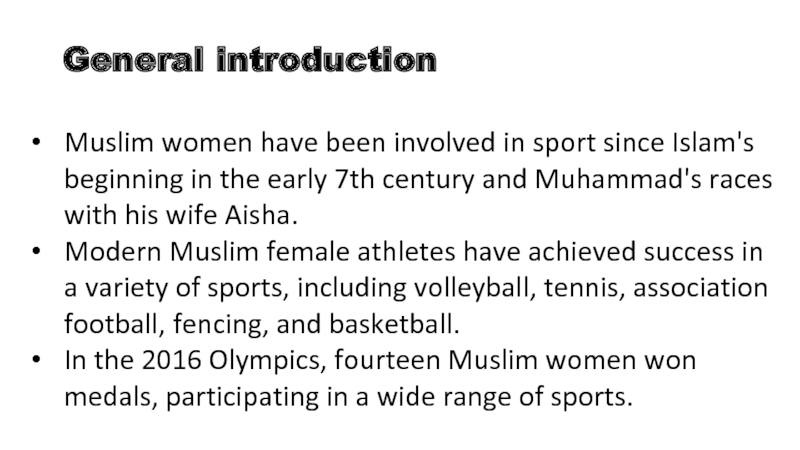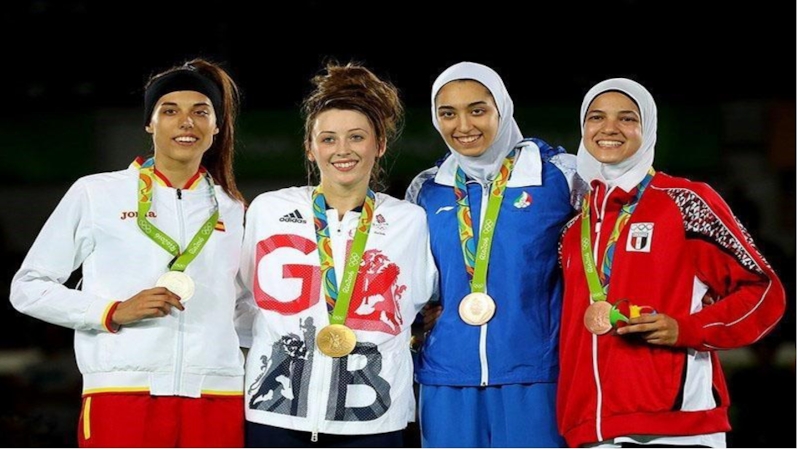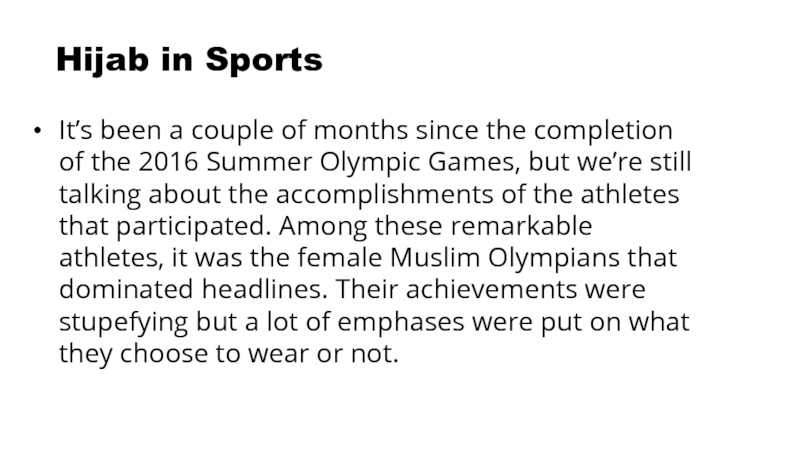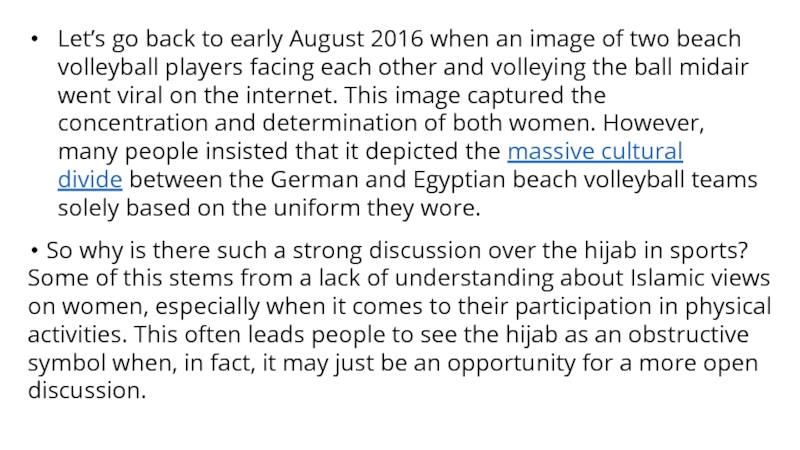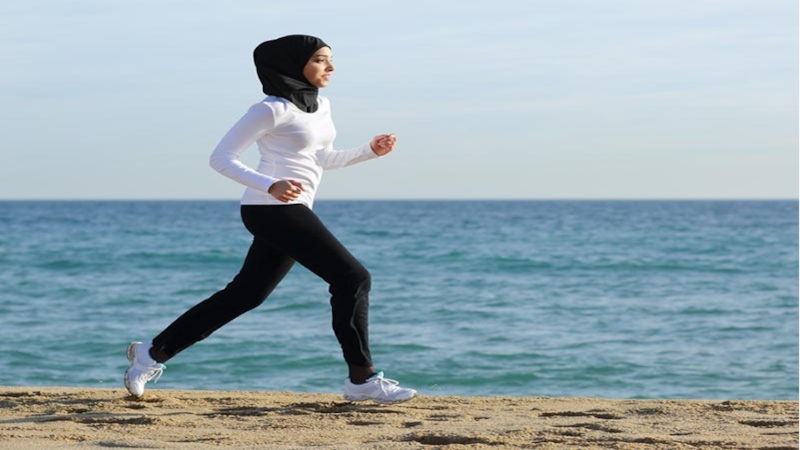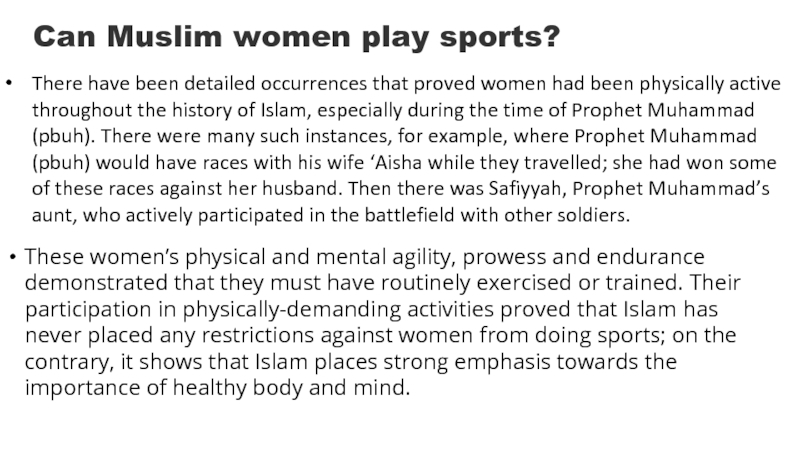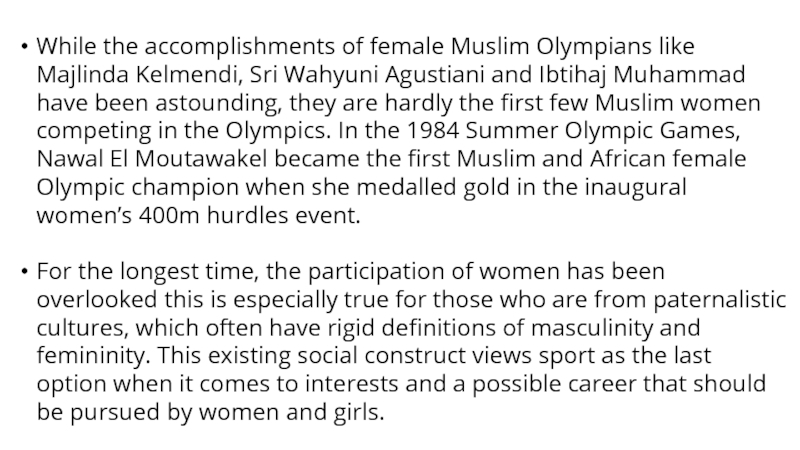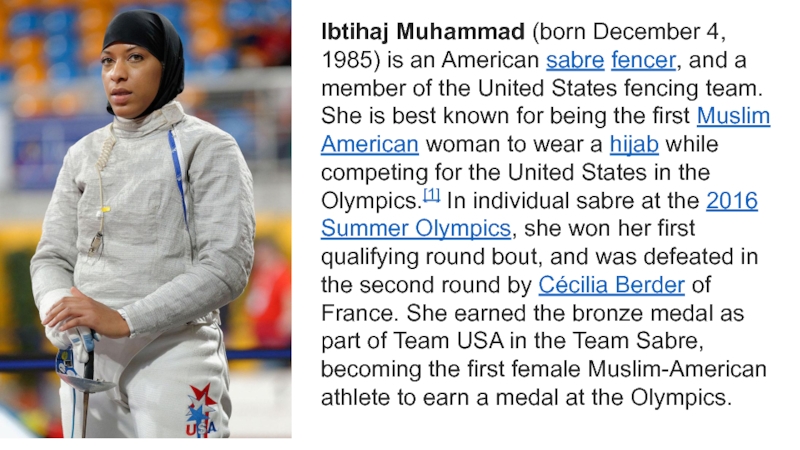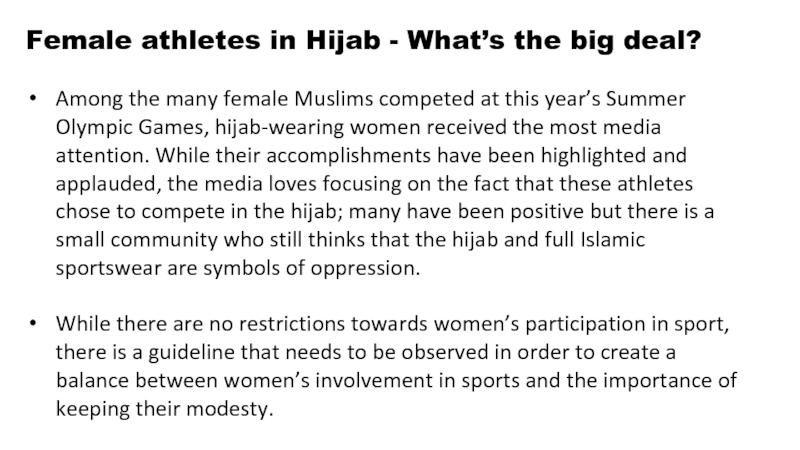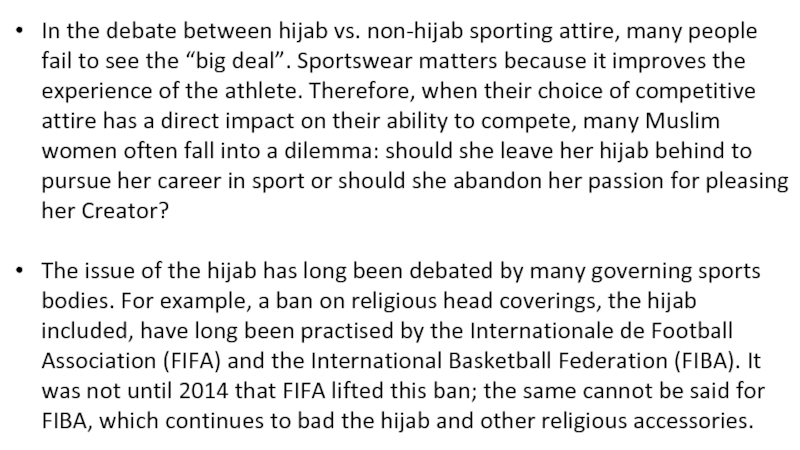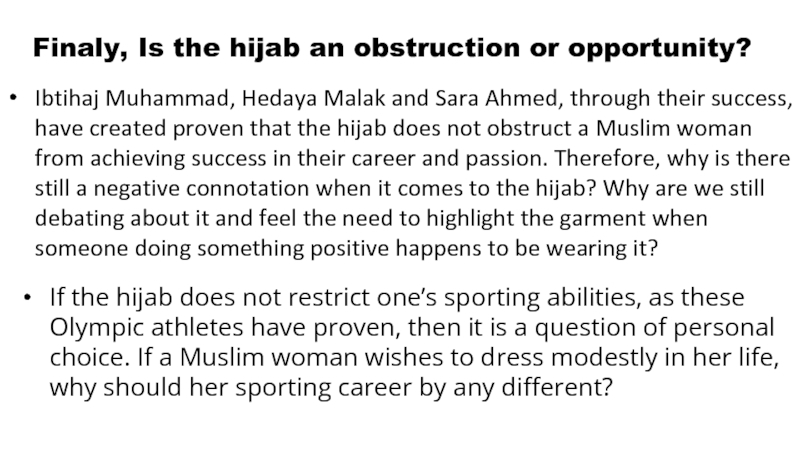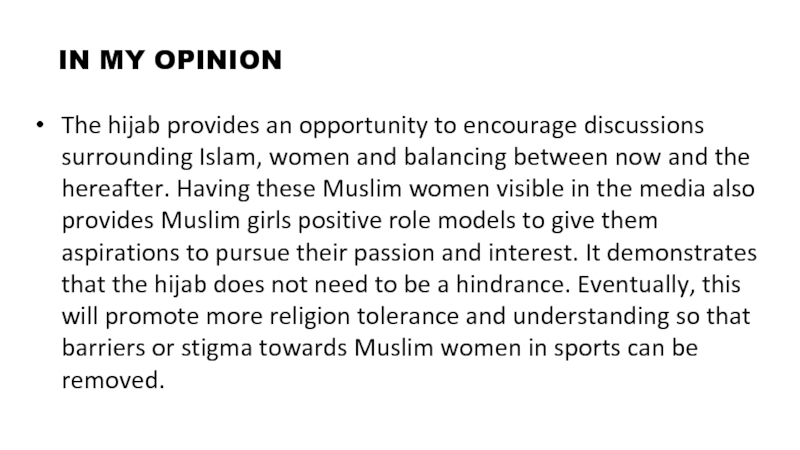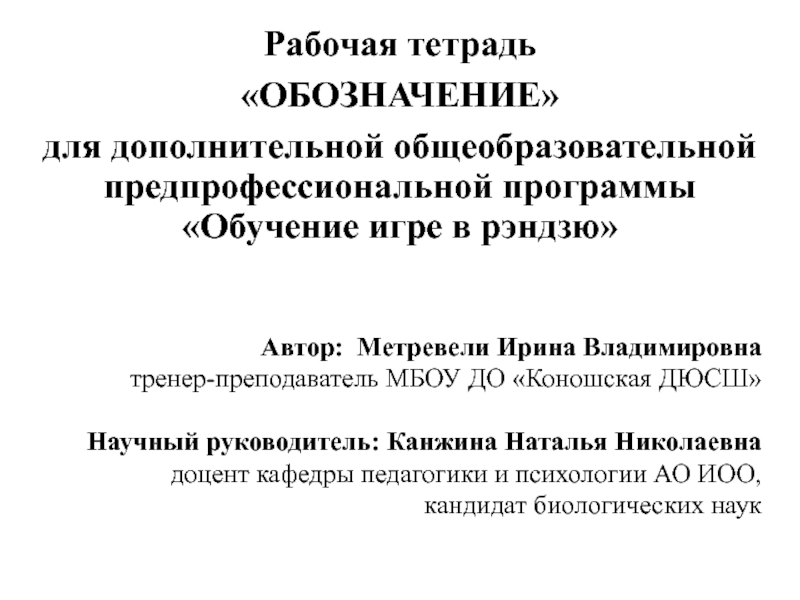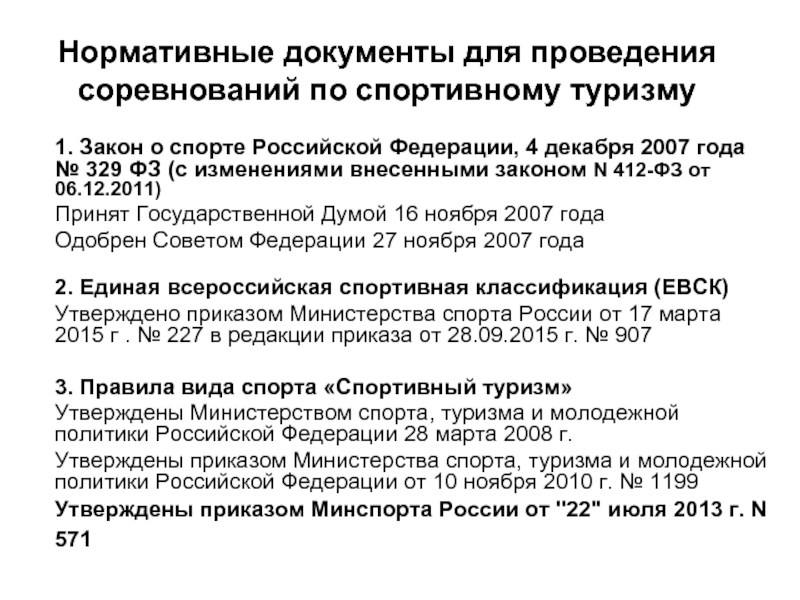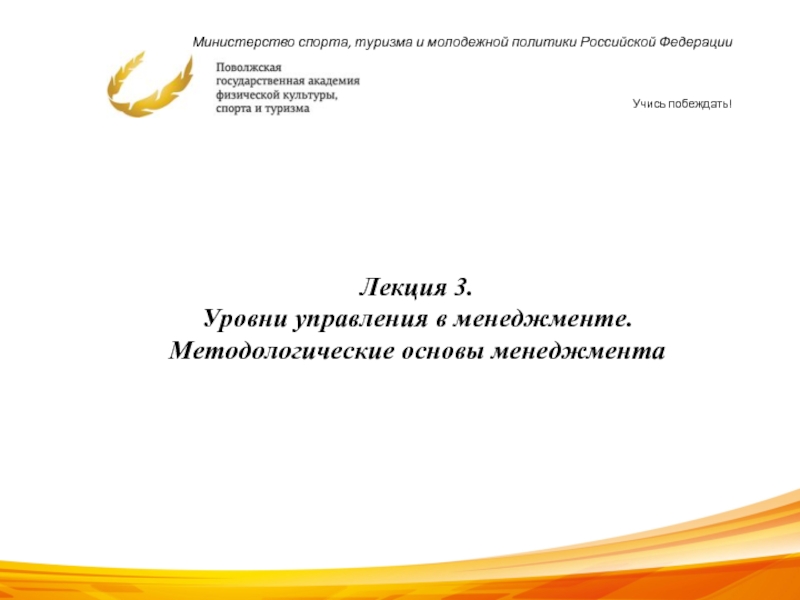- Главная
- Разное
- Дизайн
- Бизнес и предпринимательство
- Аналитика
- Образование
- Развлечения
- Красота и здоровье
- Финансы
- Государство
- Путешествия
- Спорт
- Недвижимость
- Армия
- Графика
- Культурология
- Еда и кулинария
- Лингвистика
- Английский язык
- Астрономия
- Алгебра
- Биология
- География
- Детские презентации
- Информатика
- История
- Литература
- Маркетинг
- Математика
- Медицина
- Менеджмент
- Музыка
- МХК
- Немецкий язык
- ОБЖ
- Обществознание
- Окружающий мир
- Педагогика
- Русский язык
- Технология
- Физика
- Философия
- Химия
- Шаблоны, картинки для презентаций
- Экология
- Экономика
- Юриспруденция
Muslim women in sport презентация
Содержание
- 1. Muslim women in sport
- 2. Muslim women have been involved in sport
- 4. Hijab in Sports It’s been a couple
- 5. Let’s go back to early August 2016
- 7. Can Muslim women play sports? There have
- 8. While the accomplishments of female Muslim Olympians
- 9. Ibtihaj Muhammad (born December 4, 1985) is an
- 10. Female athletes in Hijab - What’s the
- 11. In the debate between hijab vs. non-hijab
- 12. Finaly, Is the hijab an obstruction or
- 13. IN MY OPINION The hijab
- 14. Thank You
Слайд 2Muslim women have been involved in sport since Islam's beginning in
Modern Muslim female athletes have achieved success in a variety of sports, including volleyball, tennis, association football, fencing, and basketball.
In the 2016 Olympics, fourteen Muslim women won medals, participating in a wide range of sports.
General introduction
Слайд 4Hijab in Sports
It’s been a couple of months since the completion
Слайд 5Let’s go back to early August 2016 when an image of
So why is there such a strong discussion over the hijab in sports?
Some of this stems from a lack of understanding about Islamic views on women, especially when it comes to their participation in physical activities. This often leads people to see the hijab as an obstructive symbol when, in fact, it may just be an opportunity for a more open discussion.
Слайд 7Can Muslim women play sports?
There have been detailed occurrences that proved
These women’s physical and mental agility, prowess and endurance demonstrated that they must have routinely exercised or trained. Their participation in physically-demanding activities proved that Islam has never placed any restrictions against women from doing sports; on the contrary, it shows that Islam places strong emphasis towards the importance of healthy body and mind.
Слайд 8While the accomplishments of female Muslim Olympians like Majlinda Kelmendi, Sri
For the longest time, the participation of women has been overlooked this is especially true for those who are from paternalistic cultures, which often have rigid definitions of masculinity and femininity. This existing social construct views sport as the last option when it comes to interests and a possible career that should be pursued by women and girls.
Слайд 9Ibtihaj Muhammad (born December 4, 1985) is an American sabre fencer, and a member
Слайд 10Female athletes in Hijab - What’s the big deal?
Among the many
While there are no restrictions towards women’s participation in sport, there is a guideline that needs to be observed in order to create a balance between women’s involvement in sports and the importance of keeping their modesty.
Слайд 11In the debate between hijab vs. non-hijab sporting attire, many people
The issue of the hijab has long been debated by many governing sports bodies. For example, a ban on religious head coverings, the hijab included, have long been practised by the Internationale de Football Association (FIFA) and the International Basketball Federation (FIBA). It was not until 2014 that FIFA lifted this ban; the same cannot be said for FIBA, which continues to bad the hijab and other religious accessories.
Слайд 12Finaly, Is the hijab an obstruction or opportunity?
Ibtihaj Muhammad, Hedaya Malak
If the hijab does not restrict one’s sporting abilities, as these Olympic athletes have proven, then it is a question of personal choice. If a Muslim woman wishes to dress modestly in her life, why should her sporting career by any different?
